Dr Astrid Stilma has kindly written this report on the conference: Aphra Behn fever swept Canterbury in the first week of July, with the Aphra Behn (Europe) Society’s international conference ‘Aphra Behn and her Restoration’ hosted at the University of Kent and the culmination of the AHRC-funded ‘Canterbury’s Aphra Behn’ project, a collaboration between Loughborough University and Canterbury Christ Church University that gave us a year-long programme of Aphra-themed events.

Born in Harbledown in 1640, Aphra Behn (née Johnson) became the first professional woman writer of fiction in English, and one of the most significant women writers of any era. Our aim this year, with our local partners, has been to bring Aphra Behn to a whole new audience, raise her profile, and establish her as an iconic and important historical figure as well as a source of local pride.
Behn has long been known to academics as an important writer, and this was certainly evidenced by a busy and highly successful conference attended by 137 delegates from 17 countries. We were presented with a packed three-day programme of papers, round-table panels and plenaries. With four parallel sessions in each time slot, we were truly spoiled for choice.
Aphra Behn was a prolific writer in a variety of genres, all of which were represented in the conference programme. She is best known as a sharp and witty dramatist, and over the three days we were given new insights into her plays, including her use of staging, theatrical devices and music written by the foremost composers of the age, such as Henry Purcell.
Several panels re-evaluated Behn’s poetry, from her pastoral and ‘amorous’ verse to her poems of praise for prominent political figures (including most members of the royal family) and her foray into religious poetry. Apart from considering individual texts, we also heard about the collections of poetry that she compiled and edited, positioning herself as a prominent member of a literary coterie.
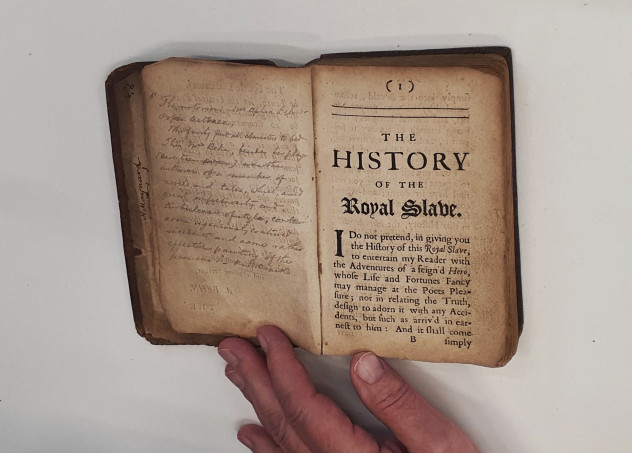
Aphra Behn’s novellas (most prominently Oroonoko, her narrative about an uprising of enslaved people in Surinam) and her translations from French were also represented. These form a lesser-known but important part of her oeuvre, and it is good to see them start to receive proper attention. One interesting aspect of Behn’s prose texts is how they worked their way into some of the myths about her life that were invented after her death, by biographers who failed (or refused) to distinguish between the narrator and the author. We were able to hear several papers debunking these myths and discussing the very real afterlife of Behn’s work, the popularity and influence of which has largely been forgotten.
It was particularly good to see the different papers speak to each other – we were able to make connections between Behn’s work in different genres, to consider individual works in the context of how she managed her career as a writer, to place her in the context of the political and religious upheavals of the late seventeenth century, to think about her life as well as her work and to consider the height, the waning and the recovery of her reputation as a writer. This was indeed Aphra Behn and her Restoration. Moreover, the conference did not only cater to scholars of Behn – the plenary lectures were open to the public, connecting the academics with the local community.
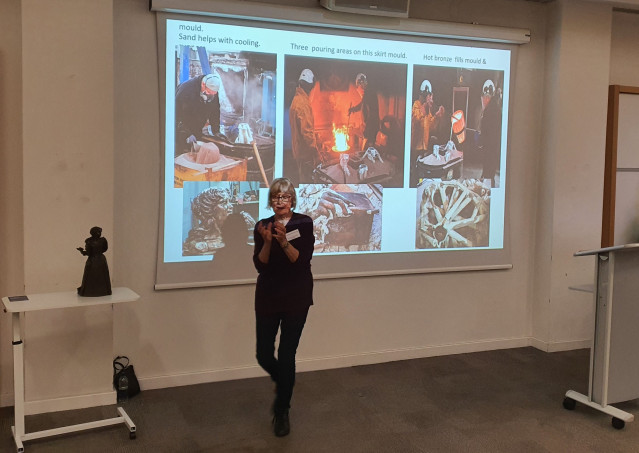
In the first public lecture on Tuesday, sculptor Christine Charlesworth told us about the process of designing and making the statue of Aphra Behn that will be unveiled in Canterbury High Street (outside the Beaney) in February 2025. After a fundraising campaign by ‘A is for Aphra’ and the Canterbury Commemoration Society, Christine’s design was chosen by the public from a shortlist of four (out of over 50 submissions). It portrays Aphra Johson at the age of 17, the age at which she left Canterbury, preparing to step out into the world. The Canterbury Commemoration Society still needs further funds for an information plaque to go with the statue. For more information and/or to donate, go to https://www.cantcommsoc.co.uk/current-projects/aphra-behn-statue/
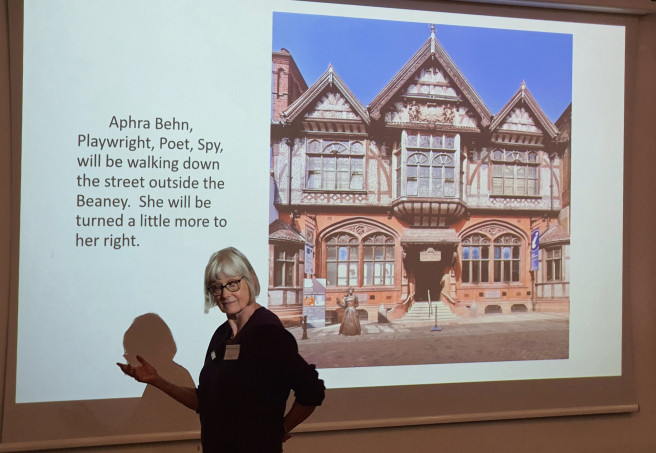
In the second public lecture, on Wednesday, we heard from Mel Evans of the University of Leeds about Aphra Behn’s spying mission to Antwerp. We have a small number of manuscript letters written by Behn; the majority were sent during her service in Antwerp as a spy for King Charles II during the second Anglo-Dutch War. The lecture considered what the letters can tell us about Behn’s experience as a spy and her resourcefulness as a letter writer, focusing particularly on her struggles to engage with her informant and her desperation to return to England when the money ran out and the regime neglected to pay her.
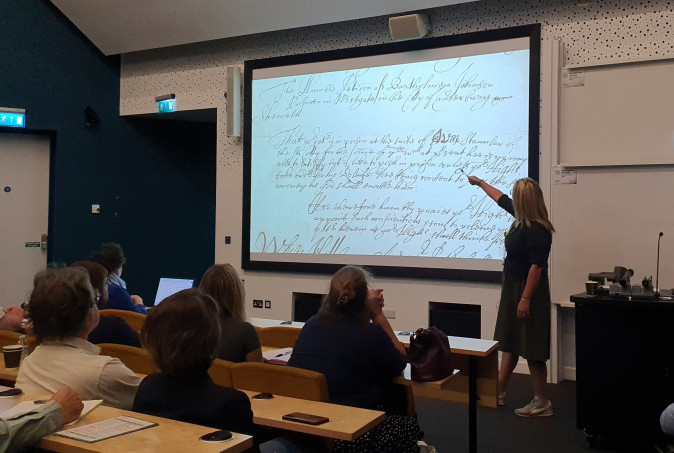
The last day of the conference gave us two public lectures. First, Charlotte Cornell (Canterbury Counsellor, PhD researcher, conference organiser and all-round engine behind all things Aphra Behn) told us about the Johnson family and their time in and around Canterbury. As part of her PhD research, Charlotte has uncovered numerous records relating to the family’s connection to Wye, their move to Harbledown and Bartholomew Johnson’s struggles with drunkenness, debt and Canterbury’s refusal to let him work as a barber in the city. We visited some of the locations in this story earlier in the week, on a pre-conference walk from St Michael and All Angels Church in Harbledown (where Aphra was christened) to the centre of Canterbury, via the grounds of the former leper hospital and the Black Prince’s Well, St Dunstan’s Church and the Westgate Towers, where Bartholomew Johnson was imprisoned for debt. Traces of the Canterbury that Aphra Johnson knew can still be found all over the modern city.
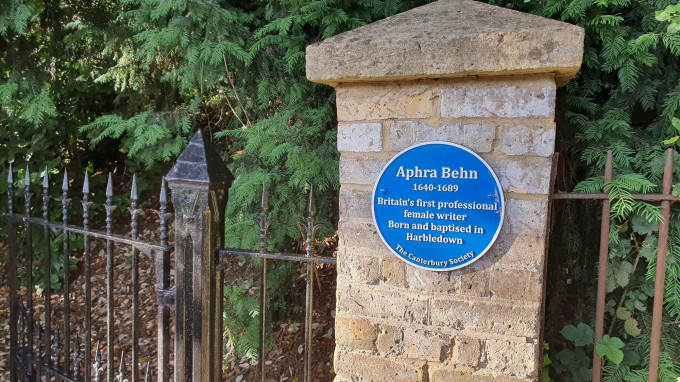
The final lecture of the conference was a late addition to the programme: theatre director Loveday Ingram was able to come and talk to us about her experience of directing Aphra Behn’s play The Rover for the Royal Shakespeare Company in 2016. She was joined by actors Alexandra Gilbraith (who played Angelica-Bianca in the 2016 production) and Sam Collings. They performed two scenes from The Rover that exemplify Behn’s skill as a playwright, demonstrating great comic timing and wit while at the same time exposing her society’s troubling attitudes to gender roles and sexual politics.
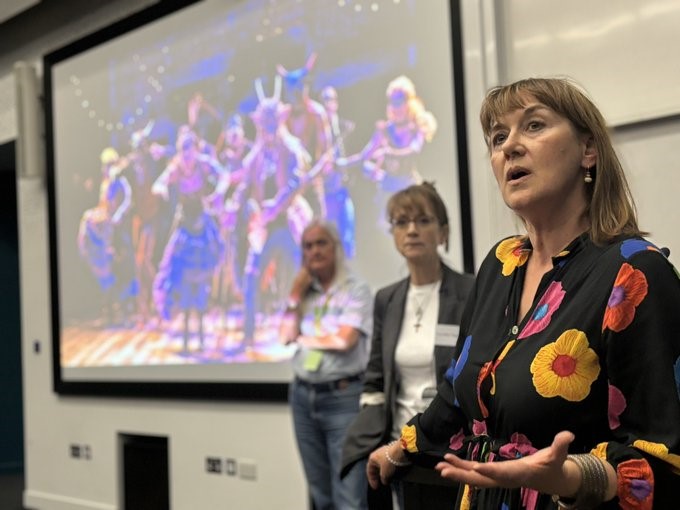
The extent to which such issues are still current today was also an important consideration for The Canterbury Players in their production of The Amorous Prince, or the Curious Husband, which ran in CCCU’s Anselm Studio for three nights during the conference week. Director Natalie Cox, supported by Sally Elkerton and Prof. Elaine Hobby, distilled Behn’s play down to an hour for its first performance since 1671. The Q&A after the opening performance on Tuesday brought out interesting questions about the balance between the comedy and the darker themes of the play – the ‘amorous prince’ of the title can be charming when he wants to be but doesn’t take no for an answer, while the ‘curious’ (or rather, jealous) husband tests his wife because he is convinced she’ll cheat at the first opportunity. Trimming these plot lines down and setting the play in a modern rather than a Restoration context placed the focus squarely on the questionable behaviour of powerful men. Some of the complex comedy of the original may have been lost in the process but, as the actors pointed out, it is striking and disturbing how similar the issues facing the women in the play are to today’s discussions about coercive control and consent.
The music for this production, commissioned by the ‘Canterbury’s Aphra Behn’ project, similarly connected Behn’s time with our own – composer Lewis Edmunds (a graduate from CCCU’s BA Music) incorporated themes from seventeenth-century music into a contemporary score.
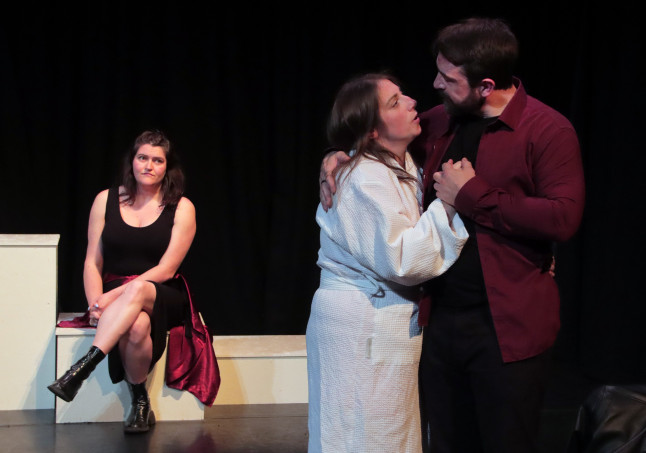
For more on this production, including interviews with director Natalie Cox and ‘Canterbury’s Aphra Behn’s project leader, Professor Elaine Hobby, you may wish to check out BBC Radio 4’s coverage on The World Tonight (available on BBC Sounds, the 2 July episode at ca. 39 minutes in), or the articles by Athena Stavrou in The Independent (2 July, available here) and Elizabeth Djinis in Smithsonian Magazine (5 July, available here).
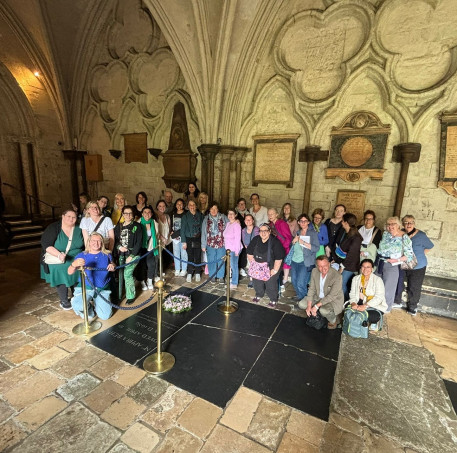
The conference concluded with two trips connecting Aphra Behn with more recent women writers. On Friday, we travelled to Westminster Abbey to take up Virginia Woolf’s call that ‘All women together ought to let flowers fall upon the tomb of Aphra Behn … for it was she who earned them the right to speak their minds.’ (A Room of One’s Own)
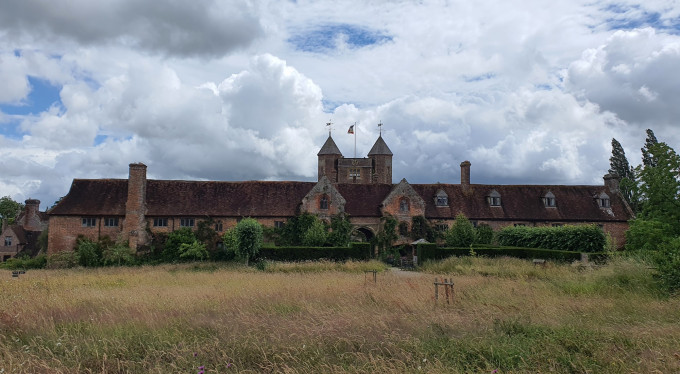
Finally, on the Sunday after the conference, we visited Sissinghurst Castle and Gardens. The creator of the gardens, Vita Sackville-West, is perhaps best known in a literary context for her relationship with Virginia Woolf, but she was an accomplished writer in her own right and she wrote the first modern biography of Behn, Aphra Behn: The Incomparable Astrea. The gardens are truly amazing – wouldn’t it be great if Sissinghurst were celebrated for its literary connections, too?
Although the project is drawing to a close, not all ‘Canterbury’s Aphra Behn’ events are in the past. You can still visit the wonderful exhibition ‘Aphra Behn: Literature’s Best-Kept Secret’ in the Beaney House of Art and Knowledge until 18 August. It includes a variety of documents, printed books and artefacts relating to Aphra Behn and more generally to Restoration Kent. And it has led to one of the most exciting events of the week. A visitor to the exhibition looked at the books on display and returned later with a volume of their own that they thought might be of interest. This turned out to be a 1688 first edition of Aphra Behn’s Oroonoko! There were six known copies of this text in the world – now there are seven. We were privileged to be allowed a quick look at this remarkable discovery during the conference.
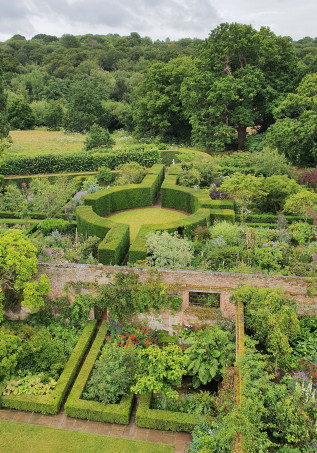
Hopefully we will have much to look forward to as we continue to work with our local partners to keep Aphra Behn on Canterbury’s radar.
 Centre for Kent History and Heritage
Centre for Kent History and Heritage Sheila Sweetinburgh
Sheila Sweetinburgh 1677
1677

